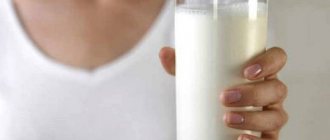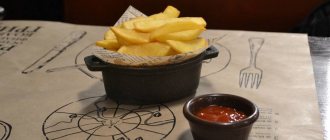Classification
Today there are many varieties of salt, which differ in color, taste, chemical composition, as well as the degree of grinding and purification. It’s easy to get confused among the wide range. Which one should you prefer?
Types of salt:
- Iodized. Useful for people living in environmentally unfavorable areas. Contraindicated in case of overactive thyroid gland.
- Extra. It is an “aggressive” type of salt, since it contains exclusively pure sodium chloride. During the production process of the product (evaporation of water, cleaning with soda) all useful microelements are destroyed, so it is practically of no value to the human body.
- Stone. This is a natural grayish salt extracted from mines.
- Black. It is a natural, unrefined product. Improves digestion and has a laxative effect. Black salt contains potassium, iodine, sulfur, and iron.
- Cooked. It is essentially bleached rock salt, in granules.
- Marine. The most useful product, a natural source of microelements. Its composition includes: sodium, chlorine, calcium, potassium, phosphorus, magnesium, manganese, zinc, iron, selenium, copper, silicon, iodine [5].
Sea salt is extracted from the planet's waters. It is much healthier than stone or cooking. Its color (gray, pink, black, red) and taste (rich, mild or pungent) are determined by local algae and clay species concentrated in evaporation ponds. Used to treat sinusitis, pneumonia, periodontal disease, hypertension, rheumatism, and poisoning.
According to the place of extraction, the following subspecies of sea salt are distinguished: “Maldon” (England), “Terre de Sel” and “Sel gris” (France), “Rose” (Bolivia), “Himalayan” (Pakistan), “Hawaiian red” or “ Hawaiian black”, “Kala namak” (India), “Persian blue” (Iran).
- Dietary. A distinctive feature of this type is its low sodium content. Dietary salt contains potassium and magnesium, which support the functioning of the heart and blood vessels.
Salt is classified according to grinding method (coarse, medium, fine), purity (highest, first, second grade).
The product is actively used in the food industry, medicine, and cosmetology.
In cooking, coarse salt is used exclusively for canning vegetables, salting fish, and preparing soups and cereals. Medium grinding is used to improve the taste of marinade, dry salting of meat, and baking fish. Fine salt is added to prepared dishes (snacks, salads) and served. It dissolves quickly and does not squeak on the teeth.
The greatest value for the human body is sea salt, extracted from inland seas and salt lakes.
Let's consider what is unique about this gift of nature.
Treatment and rehabilitation of salt addicts in Krasnodar
The drug salt appeared relatively recently; its study is complicated by its regularly changing composition. Unlike other psychostimulants, the drug is eliminated from the body very slowly. To save a person from addiction, it is necessary to carry out comprehensive treatment and rehabilitation in a center. Therapy is aimed at eliminating the negative impact of the drug on the body, its rapid elimination from the body, restoring the functioning of internal organs, as well as social adaptation.
A number of specialists in the field of addiction medicine are involved in the process of psychosocial rehabilitation:
- addictologists;
- narcologists;
- psychologists;
- psychotherapists;
- psychiatrists.
As well as parents, relatives, loved ones and family members of addicts. Specialists help them restore relationships and properly build communication with former patients of the clinic. If an addict has a desire to get rid of the disease, an integrated approach to treatment will be implemented, which gives a positive result.
Detox – removal of toxins
The first stage of drug addiction treatment is detoxification. Doctors use IVs and effective medications to remove toxins from the body of a drug addict, as well as modern European equipment at the Grail clinic. It is important to understand that without qualified drug treatment help, it will not be possible to cleanse the body and return the addict to a sober life. It is important that the patient himself has a desire to be treated. In this case, an individual method of treatment and rehabilitation is selected for him at the center.
Treatment of salt addiction in a Krasnodar clinic is the only chance for an addict to recover. The detoxification procedure helps the patient to normalize well-being and remove half-life products from the body. This is an important stage in the treatment of salt addicts. Intensive therapy helps reduce the concentration of the drug in the body, in order to completely remove it and restore the functionality of all internal organs, it is important to go through all stages of inpatient treatment.
Our center provides both medicinal and hardware detoxification of the body. In the first case, the patient is given intravenous medications to remove poisons, as well as vitamins and microelements necessary for recovery. In the second case, the blood is purified through plasmapheresis. These procedures step by step help eliminate all toxins and restore the patient's body.
Psychological rehabilitation
Psychocorrection and sessions with a psychologist are the most important part of the comprehensive treatment of salt addiction, which takes place in Krasnodar. Psychological rehabilitation is carried out using effective and time-tested programs that have proven their effectiveness in practice hundreds of times. In particular, we use the 12 Steps program.
The importance of sea salt for the body
Salt extracted from the depths of the sea has unique qualities. In laboratory conditions, scientists have still not been able to derive its analogue, despite the fact that the composition of the crystal has long been known. Esotericists claim that salt obtained from sea water has great natural energy, which fills the human body with harmony and health [6].
From time immemorial, sodium chloride has been used as a natural preservative that increases the shelf life of products. Based on it, compositions were prepared to prolong youth and beauty.
The beneficial properties of sodium chloride are due to the presence of sodium, potassium, calcium, bromine, magnesium, iodine, zinc, silicon and iron in the composition [6].
The effect of salt on the human body:
- regulates and maintains water balance and sodium-potassium ion exchange within normal limits;
- relieves spasms of smooth muscles;
- supplies the body with macro- and microelements, in particular sodium;
- calms the nervous system;
- promotes the synthesis of hydrochloric acid;
- inhibits putrefactive processes in the gastrointestinal tract (due to antiseptic properties);
- speeds up metabolism;
- promotes the formation of cell membranes and the formation of red blood cells;
- supports normal hormonal and lipid metabolism, the function of the sex glands;
- improves the condition of the skin.
Salt acts as an antiallergic and disinfectant agent. It is useful not only to consume it internally, but also to use it externally as baths, inhalations, and as part of masks. Thus, salt compresses under the eyes relieve bags, rinses with the addition of soda relieve inflammation of the tonsils, and baths relieve swelling of the legs [6][7].
Overdose from salt
Even if you try salt once, you can die, since “designer” drugs are very unpredictable, and their composition and amount of active substance are not known to addicts. As a result, not only experienced drug addicts suffer, but also beginners. What will happen to a person if he takes a large dose of a salt drug?
Symptoms of a salt drug overdose:
- convulsions;
- spasms;
- muscle twitching;
- dilated pupils;
- cardiopalmus;
- confusion.
Death from an overdose of salt can occur from a cerebral hemorrhage. Death from an overdose occurs quite often if loved ones do not call a narcologist and do not provide timely first aid to the victim.
Methods for treating diseases with salt
When the first symptoms of illness appear, do not rush to go to the pharmacy; you can improve your condition using traditional methods, without the use of synthetic products.
Sea salt has antibacterial, antiseptic, and wound-healing effects. It is used to prepare solutions for washing the nasal passages, gargling, baths, and inhalations. It is a natural disinfectant, anti-inflammatory agent that fights ARVI diseases, colds, rheumatism, arthrosis, and neutralizes radiation [6][7].
Salt treatment methods:
- Inhalations. Prescribed for the prevention and treatment of respiratory diseases, they have a general strengthening value. The principle of operation of the procedure is based on the fact that with the inhalation of medicinal steam, beneficial substances enter the lungs, which kill painful microorganisms, disinfect the mucous membranes of the larynx and nasopharynx, relieve swelling, thin sputum, and saturate the tissues with biologically active compounds. As a result, the patient’s well-being improves, and the disease recedes faster [6][7].
Inhalations with sea salt have anti-inflammatory, antiseptic effects, and are useful for a runny nose and cough.
To enhance the effect, add pine extract, nettle, eucalyptus, sage or linden blossom to the teapot. Such inhalations are carried out 2 times a day.
To prepare therapeutic steam, dissolve 30 grams of sea salt in a liter of water. Bring the resulting mixture to a boil, cook for 5 minutes. Breathe this solution for 10 minutes. To eliminate problems with the upper respiratory tract, inhale through your mouth, exhale through your nose; to treat diseases of the nasopharynx, do the opposite procedure.
Inhalations are contraindicated for hypertensive patients, people with heart and pulmonary insufficiency, nosebleeds, elevated body temperature, and children under 2 years of age.
After the procedure, you should not strain your throat, go out into the cold air, it is advisable to lie down for 30 minutes.
- Rinsing the nasal cavity, gargling. Symptoms of colds, sinusitis, tonsillitis, tonsillitis, sinusitis, rhinitis recede if the mucous membranes are disinfected with saline solution. This is the safest and most effective way to cleanse the nasal passages of pathogenic mucus. Salt rinsing increases local immunity, removes microparticles of irritants (bacteria, pollen, dust), strengthens capillaries, reduces swelling of the mucous membrane, and accelerates recovery. A solution with sodium chloride reduces inflammatory reactions and reduces the likelihood of infection of the body [6][7].
Method for preparing a disinfectant for rinsing the nasal passages and gargling: dissolve 7 - 10 grams of sea salt without additives in 500 milliliters of hot water. Cool the solution to an acceptable temperature (it should be warm). Perform the procedure 3 – 5 times a day.
Remember, using a cold saline solution to gargle or rinse your nose is unacceptable, as it can worsen the patient's condition.
Sea bath. Medicinal properties: relieves rheumatoid spasms, restores mobility and flexibility of joints, relieves osteochondrosis, skin diseases (psoriasis, neurodermatitis, vitiligo, eczema). Hot baths with water temperatures up to 42 degrees are effective for arthritis, neuropsychiatric disorders, liver and kidney pathologies. The course of treatment is 10–15 procedures, lasting 15 minutes, daily or every other day. Contraindications: diseases of the cardiovascular system [6][7].
Preparing a bath: dial water to 35 degrees, dissolve 1.5 kilograms of sea salt. Lie down with your legs slightly higher than your head (this will ease the work of your heart). Procedures should be carried out in the evening no later than 1 hour before bedtime.
To relieve nervous tension, add aromatic oil of chamomile, lavender or lemon balm (a few drops) to your bath.
Why is salt called "white death"?
This term refers to regular table salt. This product is completely refined and devoid of beneficial properties. Therefore, for internal and external use, it is recommended to use exclusively sea salt enriched with microelements. During the production process, it is not subjected to heat treatment, so the product retains maximum nutrients in its composition [8].
Designer drugs – what are they?
What are designer drugs?
Everyone knows that prohibited substances are created in makeshift basement conditions. Drugs are made even in ordinary apartments. A feature of such substances is, as mentioned earlier, their composition changes regularly. New drugs are created almost every day to make them easier to distribute. The danger of such substances is that their effect is unpredictable. From the same supplier you can purchase a drug that is completely different in composition, effect and effect on the body. This makes dosage calculations much more difficult. As a result, salt drug poisoning is far from uncommon. Many people become severely intoxicated after using this drug only once.
Another danger is an overdose of “bath salts.” If you do not call an ambulance in a timely manner, a person can die in a matter of minutes. If your friend or loved one uses salt and you want to help him, call Krasnodar by phone. Around the clock. Anonymously. Inexpensive. Addiction treatment with guaranteed results.
Excess salt in the body
Interestingly, sea salt consists of 97% sodium chloride, and the remaining part (3%) consists of mineral compounds necessary for human life.
Sodium normalizes kidney function, maintains normal water-salt balance, neuromuscular activity, participates in muscle contraction, and transport of blood sugar into cells. Without this element, the growth of the body and the normal functioning of internal organs are impossible [9][10].
By interacting with chlorine, sodium prevents the leakage of fluid from blood vessels into nearby tissues. It is impossible to overestimate the role of this element for a living organism [9][10].
In a healthy person, the sodium content in the blood ranges from 135 to 145 millimoles per liter. A shift in this balance up or down indicates the presence of “hidden” problems in the body [9][10].
With prolonged excess salt consumption (over 10–15 grams per day), hypernatremia develops, accompanied by cellular dehydration [10].
Other causes of sodium accumulation in the body:
- diabetes mellitus type 2;
- hypertension;
- unhealthy diet (uncontrolled consumption of fast food, processed foods);
- hereditary predisposition;
- insufficient amount of water consumed (less than 1.5 liters per day);
- taking mineral preparations;
- violation of water-salt metabolism;
- dysfunction of the adrenal glands and kidneys [10].
Symptoms of excess:
- fluid retention in the body (edema);
- increased body temperature;
- excessive excitability;
- decreased kidney function;
- constant thirst;
- lethargy, loss of strength;
- constipation;
- joint pain;
- dark yellow urine;
- frequent headaches;
- muscle cramps;
- motor restlessness;
- arterial hypertension [10].
Consequences:
- muscle fibers are stretched, their function is weakened (response to impulses worsens);
- renal failure, nephritis, inflammation of the canals develops;
- the blood thickens, the pulse quickens, chronic hypertension appears;
- the risk of stroke and heart attack increases;
- arrhythmia and tachycardia develop;
- fatty deposits (plaques) appear on the walls of blood vessels;
- The regulatory function of the hypothalamus decreases [10].
To eliminate the symptoms of hypernatremia and improve the patient’s condition, the amount of salt consumed should be strictly controlled and reduced to a critical minimum of 3–5 grams per day. In addition, a strict diet, medication, and outpatient treatment are prescribed. The goal of therapy is enhanced elimination and blocking of salt deposition [10].
Remember, self-medication is dangerous to health. Therapy is prescribed by a doctor after drawing up a clinical picture of the patient’s health.
How long do salt addicts live?
How long do drug addicts who are addicted to salts and mixes live? The lifespan is strictly individual. How long a drug addict will live depends on the length of use, age, individual parameters, health status, quality of the drug used and other important factors. On average, the life expectancy of salt addicts ranges from 1 to 10 years. Death most often occurs as a result of exhaustion, acquired diseases, poisoning with toxins, or overdose.
Shortage
Causes of hyponatremia:
- insufficient intake of salt from food (less than 0.5 grams);
- liver cirrhosis with ascites;
- polycystic kidney disease;
- pyelonephritis;
- decompensated diabetes mellitus;
- chronic renal failure;
- nephrotic syndrome;
- diseases of the digestive tract;
- taking diuretics;
- hypersecretion of antidiuretic hormone [9].
Symptoms of deficiency:
- decreased skin turgor;
- dry dermis;
- leg cramps;
- vomit;
- thirst;
- decreased urine output;
- nausea;
- confusion, hallucinations;
- loss of appetite;
- drowsiness and apathy;
- weight loss;
- muscle weakness;
- frequent infectious diseases
- decrease in blood pressure [9].
Consequences:
- depression;
- deterioration of food digestion;
- decrease in blood plasma volume;
- leaching salt from bones;
- increased accumulation of harmful nitrogen compounds that undermine health;
- dysfunction of the vestibular apparatus [9].
Treatment of hyponatremia involves the use of medications and foods containing sodium.
Food sources: sea salt, sauerkraut, brines, broths, soy sauce, canned meat, tomatoes, celery, eggs, fish and seafood.
Signs of a drug addict
It is not difficult to suspect that your loved one has become a drug addict, but it is impossible to determine exactly which drug he is using without testing. The same applies to salts.
To understand that a person is using psychostimulants, you need to pay attention to his daily routine, friends, finances and behavior.
Usually salt addicts sleep little at night, constantly disappear for 1-2 days, after which they return home and sleep for 12-15 hours. After waking up, they eat a lot. Despite their increased appetite, they are usually thin, since they eat only once every 1-2 days.
If new friends appear with characteristic fast speech, jumping ideas and “running” eyes, this may be a sign of the beginning of the use of psychostimulants. People usually start taking these substances in company or at parties. Take alone only in cases of severe dependence.
Salt addicts quickly run out of money because they usually don’t work anywhere. Due to financial need, they begin to steal valuables, money from the house, and may even go so far as to steal household appliances. If they can’t steal houses, they switch to others, and they can go to jail for this.
Salts are usually consumed intranasally (through the nose). Because of this, drug addicts develop a characteristic nose sniffing in the first few hours after taking it. They drink a lot of liquids, coffee or energy drinks.
Such people may have bags of drug residue, bottles or cans of energy drinks in their room.
Taken together, these signs may indicate addiction. The sooner testing is carried out and a drug addict is referred for treatment to specialized centers, the greater the chances of returning him to normal life.
Myths about salt
Disputes about the benefits and harms of sodium chloride have arisen since ancient times, and do not subside to this day. Some argue about the need to reduce daily salt intake to a minimum. Others, on the contrary, call for including a flavoring additive in the daily diet so as not to “injure” the body.
Myth No. 1 “Salt is poison”
It is not true. Sodium chloride is the most valuable gift of nature, which a few centuries ago was worth its weight in gold. The benefits of salt for the human body are invaluable. Its chronic deficiency can be fatal. Chlorine and sodium included in the product are involved in vital functions: transmission of nerve impulses, transport of oxygen in the blood, and muscle movements.
In moderate quantities, not exceeding the daily requirement, salt is a product that supports human health. However, if consumed excessively, its benefits turn into harm. In this case, the expression “salt is white poison” is completely justified, since hypernatremia can literally kill a person [1].
Myth No. 2 “Diet without salt”
Currently, there is an erroneous assumption that by refusing to take sodium chloride, a person begins to lose kilograms due to the breakdown of fat. This is partly true. A salt-free diet will help you lose up to 4 kilograms in 14 days. However, in this case, weight loss occurs not due to the breakdown of fat deposits, but as a result of dehydration of the body. Along with the liquid, minerals (calcium, potassium, magnesium) are washed out, the deficiency of which leads to an imbalance in the electrolyte balance in the body. As a result, a person experiences rapid fatigue, dry hair and skin, and loss of strength.
A lack of salt in the body is accompanied by the development of diseases of the cardiovascular system, depression, osteoporosis and anorexia.
You cannot completely stop using sodium chloride, as this will lead to poor health.
Today, nutritionists agree that a salt-free diet will do more harm to the human body than good [9].
Myth No. 3 “Salt deposition”
Bile salts, calcium, phosphates, and urates are often deposited in the human body. This group of chemical compounds has nothing to do with sodium chloride. The most important aspect is the ratio of the amount of salt consumed and excreted. It is interesting that to maintain life, the human body absorbs only the missing part of sodium chloride. At the same time, the excess is excreted in the urine. If there is a metabolic disorder, salts begin to accumulate in the gallbladder, joints, and kidneys. As a result, the outflow of bile is disrupted, severe pain occurs, cartilage is destroyed, the pelvis becomes inflamed, and stones form.
Thus, when it comes to salts, we do not mean sodium chloride, but the content of chemical compounds in tissues [11].
Myth No. 4 “Destroys teeth”
True, sea salt, if you chew its crystals, can damage the enamel. In other cases, this statement is nothing more than erroneous. Salt is eaten exclusively in dissolved form, in which it cannot harm the teeth. On the contrary, it, together with soda, is used to treat mouth ulcers and strengthen gums [12].
Myth No. 5 “Increases blood pressure”
Excess salt in the body causes the development of atherosclerosis and negatively affects the mechanism that controls blood pressure. In addition, with excessive consumption of sodium chloride, the need for fluid increases sharply, which leads to increased stress on the heart and blood vessels. As a result, swelling of the limbs is observed, and bags appear under the eyes. Therefore, hypertensive patients are recommended to reduce the daily dose of salt [13].
Formation of dependence on salt
How and how quickly does addiction to narcotic salts occur? Psychostimulants are synthetic drugs that cause psychological dependence after the first use. A person sees no reason to give up the “high” and pleasant sensations, but he does not think at all about the consequences of using smoking salt, and sometimes is not even aware of it. Quite a lot of addicts try to get rid of their addiction on their own. However, quitting smoking salt is not so easy. The addict himself will not be able to stop using it, since in addition to psychological dependence, physical dependence also develops.
Addiction to a psychotropic occurs quite quickly, since the substance acts directly on the neurons of the human brain, as well as on certain of its centers. In the final stages of addiction, it is quite difficult to cure salt addiction. The patient is completely dependent on the drug. However, doctors at a drug rehabilitation center in Krasnodar are ready to help salt addicts recover inexpensively, quickly and with a guarantee of long-term results.
Useful on the farm
Sodium chloride is used in everyday life for the following purposes:
- so that the shells on the eggs do not crack during cooking (add to water);
- so that the cookies do not burn in the oven (pour them under the molds);
- to prevent bugs from getting into jars of cereals (put a bag of salt at the bottom of the container);
- to remove greasy stains from clothes (rub with salt);
- to eliminate the smell of mud from fish (rinse in a saturated saline solution);
- so that colored linen does not fade during washing (add to water);
- so that the first pancake does not come out “lumpy” (wipe the pan);
- so that dry mushrooms regain their former appearance (soak in salted milk);
- so that wet firewood flares up faster (sprinkle with crystals);
- to give softness to terry robes and towels (after washing, rinse in water with added salt).
General information
Salt drug is a type of substance with a psychostimulant effect. These substances received this name because they were distributed via the Internet under the guise of bath salts. Most often, the salts contain mephedrone, but impurities of other substances with a similar effect are also possible.
The drug was promoted under the guise that it was safer than others, but it turned out that dependence on salts can occur after just a few weeks of regular use.
Salts became very popular in the early 2000s. Their production does not require many reagents and just basic knowledge of chemistry. Because of this, salts are very cheap. They are even used by heroin and crack addicts as a temporary substitute.
The structure of the salts is designed so that the drug is poorly metabolized and can remain in the body for up to 5 days. If used regularly, the elimination period is extended to 12-14 days.
Salt as a beauty product
Sodium chloride has a beneficial effect on nails, skin, and hair. Sea salt is used in beauty salons for scrubs, peelings, baths, anti-cellulite products, compresses and masks. Procedures based on sodium chloride relieve inflammation, normalize the skin's fat balance, cleanse the dermis and make it more elastic.
Beauty recipes at home
"Bath of Aphrodite"
Relieves tension, soothes sensitive and irritated skin, rejuvenates.
Method of preparing a bath: dissolve 500 grams of sea salt in warm water, add 200 grams of dried seaweed, 50 milliliters of honey and 500 milliliters of milk. The procedure is carried out every other day, 10 sessions.
Body Scrub
Cleanses the skin, removes impurities and dead cells from its surface.
To prepare the scrub, mix 15 grams of coffee grounds, finely ground sea salt, a few drops of essential oil and 15 milliliters of natural oil (sesame, grape seed, olive, almond). Apply the resulting mixture onto the body with gentle massage movements, rinse with warm water.
Anti-cellulite product
Gets rid of orange peel, nourishes and tightens the dermis, improves blood circulation. The active components of the product have good penetrating ability and help remove fat from the deep layers of the skin. However, eliminating cellulite requires an integrated approach, including undergoing tightening procedures, performing physical exercises, and following a therapeutic diet.
To prepare a fat-burning product, mix medium-ground sea salt with thick honey until the consistency of a homogeneous paste. Apply the anti-cellulite composition to the problem area with light massage movements. Pat the smeared areas until the product liquefies on them. Rinse off with warm water.
To smooth the dermis and burn fat deposits in the subcutaneous tissue, repeat the procedure every other day until a lasting result appears.
To enhance the effect, add grapefruit oil (a few drops) to the honey-salt mixture.
Bath to strengthen the nail plate
To prepare a saline solution, dissolve 30 grams of soda and 30 grams of sodium chloride in 250 milliliters of warm water. Immerse your nails in the bath for 15 minutes, do not rinse. Perform this procedure daily for 14 days, before going to bed. This way the salt will “work all night”.
Sodium chloride strengthens the nail plate, makes it elastic and dense, and also saturates it with useful minerals. Thanks to this, it stops exfoliating, crumbling, breaking, and growth accelerates.
Facial peeling
Removes “blackheads”, has a whitening effect, suitable for combination and oily skin types.
To prepare the peeling, mix the following ingredients: cream (15 milliliters), finely ground sea salt (30 grams), cottage cheese (15 grams). Apply the mask to your face, rub it for 30 seconds with massage movements. Rinse your skin with warm, then cool water.
For those with very oily skin, it is recommended to add an additional ingredient to the composition - baking soda (5 grams).
Compress for varicose veins
According to statistical data from the surgery department of the Russian National Research Medical University named after. N.I. Pirogov, more than 50% of the world’s population suffers from swelling of peripheral veins under the skin. As a result, the movement of blood through the vessels worsens, nodes form, and the valve apparatus is destroyed. The veins begin to experience pressure, swell, ache, become tortuous, and become bluish in color. The vessels stretch, and characteristic “cobwebs” form. The main factor in the appearance of pathology is insufficient development of connective tissue.
Symptoms of varicose veins: heaviness in the legs, pain, cramps, swelling of soft tissues, burning in the veins, lumps on the shins, change in skin color. If the disease is not treated in time, the changes spread further, the following are observed: trophic ulcers, pigmentation, induration, phlebothrombosis, malnutrition of the dermis, rarely - fever, weakness, bleeding when nodes rupture.
A compress for varicose veins has warming properties, relieves pain and eases overall well-being.
Method of preparation: dissolve sea salt in warm water in a ratio of 1:1, cool. Soak gauze in the resulting solution, apply to the problem area, and secure with an elastic bandage. After the procedure, rub the treated area.
For hair
Sea salt stimulates the hair follicles, enhances the growth of curls, normalizes the functioning of the sebaceous glands, relieving the scalp of dandruff and excess oil.
In addition, sodium chloride stimulates blood circulation, cleanses the dermis of dead cells, improves hair nutrition in the root zone, prevents strands from falling out, and improves their structure.
Sea salt is rubbed into the scalp or used to make masks. In the first case, finely ground powder is applied with massaging movements to clean, damp hair for 15 minutes, then rinsed thoroughly and dried naturally. To strengthen the structure of medium-length hair, you will need 30–50 grams of sodium chloride.
A salt-based hair mask is more gentle on the scalp. Ingredients: 30 milliliters of yogurt or kefir, 30 grams of sodium chloride. To nourish the scalp, you can add honey, eggs, and essential oils. The ingredients are mixed, applied to the roots of the hair, distributed over the entire length. The head is wrapped in a plastic bag. Leave the mask on for half an hour. Wash off with shampoo. Do not blow dry.
To avoid discomfort and pain, “salt” procedures are carried out only when there are no injuries or scratches on the scalp. The course of therapy is 21–28 days, no more than 2 times a week. If necessary, repeat the procedure after 2–3 months.
With frequent use of salt masks, your hair will lose its lightness and elasticity, become stiff and unruly, so do not overuse it.
Remember, the effectiveness of the procedures depends on the regularity of implementation, strict adherence to proportions in the process of preparing the medicinal composition and the rules of application.
Traditional beauty recipes with salt are much safer and will bring more benefits than products with chemical dyes and flavors.
What is "sol" or "speed"?
Salts are one of the most common narcotic substances today. Their turnover is high due to their low cost and easy availability. In drug slang you can often hear such a name as “bath salts”; naturally, this is not the substance for which they want to pass it off; in fact, it is nothing more than smelling salts, a drug that annually claims the lives of thousands of young people.
Salt is a narcotic substance that is part of the group of “designer” synthetic drugs. Among the distinctive features of this group of substances are: availability, instant dependence, and completely unpredictable action. Salt addiction is a severe addiction that is difficult to treat. If you do not seek help from specialists in the field of addiction in time, the addict will die within a few years, since his entire body will be exhausted and destroyed.
Harm and contraindications
Sodium chloride turns into a poison for the body if there is an excess of the product in the daily diet. Exceeding the daily norm is fraught with vision problems, poisoning, and nervous disorders.
Contraindications:
- tuberculosis;
- renal failure;
- glaucoma;
- venereal diseases;
- hypertonic disease;
- acute infectious diseases;
- swelling;
- stomach ulcer.
In the presence of these pathologies, the human body is not able to cope with the processing of sodium chloride. As a result, the benefit of the product turns into harm: the course of the disease and general health worsen, which reduces performance and limits its vital activity [1][2][3].
Complications and diseases from eating salts
What complications will an addict experience when taking smoking salts on a regular basis?
- The appearance of wrinkles, sagging and unnatural skin color, premature aging.
- Complete exhaustion of the body, absence of the body.
- Tremor of the limbs, the drug addict's hands constantly shake.
- Libido decreases to the point of impotence.
- Diseases of the gastrointestinal tract.
- The risk of developing a heart attack and stroke increases significantly.
- There is a high risk of death as a result of intoxication.
What foods contain sodium
Sodium contained in salt is the main source of the required daily requirement. But, besides this, a person receives this mineral from the following products:
- meat;
- Fish and seafood;
- bakery products;
- cheese;
- seaweed;
- green pea;
- canned vegetables.
Sauces such as ketchup, mustard, and ready-made salad dressings contain a large amount of sodium. For example, a tablespoon of soy sauce contains half the daily requirement of this microelement.
How to ease withdrawal symptoms
In a hospital, they can put the patient into an artificial coma so that he survives the withdrawal syndrome and after leaving the coma his organs function normally.
It is necessary to carry out symptomatic treatment and correction of heart function. Antidepressants may be prescribed if necessary. Psychological work with the patient also facilitates withdrawal symptoms.
At home, without special equipment and medications, the only way to alleviate withdrawal symptoms is painkillers and constant self-motivation for any physical activity.
After administering the salts to rats, it was noted that after the drug was eliminated, the brain tissue could no longer produce sufficient amounts of serotonin.
This indicates the neurotoxicity of salts and irreversible changes in brain tissue. Taken from: Phenomenological features of mental disorders from modern “designer” drugs. Text of a scientific article on the specialty “Fundamental Medicine” Sharova E.N., Zlokazova M.V.
Danger of consumption methods
Salts are consumed in 3 ways:
- Intranasally. Inhale the crushed crystals through the nose.
- Intravenously. Salts are dissolved under the influence of temperature and administered intravenously.
- Orally. They drink powder dissolved in liquid, or use special tablets made by drug dealers.
Each method has its own consequences and poses a danger to human life. There are no safe ways to use it. Apart from the risk itself at the time of administration, all the effects of the drug lead to the death of the body.
Regular inhalation of salts through the nose leads to local suppression of immunity in the nose and throat. This causes frequent viral pharyngitis, sinusitis, and tonsillitis.
Acting on the mucous membrane of the nasal septum, the latter becomes thinner, and perforations may appear in it. When exposed to the mucous membranes of the nasal sinuses, their hypertrophy and proliferation of lymphoid tissue occur, which ultimately leads to impaired nasal breathing, the appearance of apnea during sleep, and increased hypoxia of the body.
Oral administration is dangerous because it causes irritation of the esophagus and stomach. Heartburn occurs, gastritis and ulcers appear. Long-term oral intake of salts can cause metaplasia of the gastric mucosa.
With intravenous administration, the danger lies primarily in the fact that if you use one syringe, you can become infected with AIDS or hepatitis. When injecting, there is a risk of introducing infection into the subcutaneous tissue and veins. Cellulitis and abscesses appear, thrombophlebitis and the development of pulmonary embolism may occur.
Japanese paradox
The Japanese eat a lot of salty foods, but suffer less from cardiovascular diseases than the Italians, who prefer unsalted vegetables and fruits
These data on salt consumption raise a logical question: if the Japanese are leaders in sodium consumption, what about their legendary high life expectancy? It seems that WHO is trying not to notice this paradox. Moreover, a comparison of statistics on salt consumption and mortality from cardiovascular diseases leaves no stone unturned in the hypothesis of the harmfulness of salt (see figure). Interestingly, it is not so easy to find statistics on salt consumption; in any case, it is not available on the WHO specialized website dedicated to this problem. But in 2013, an article was published by an international group of researchers who, under the leadership of John Powles from Cambridge, delved into the scientific literature for a long time and managed to find enough information there to determine salt consumption in 187 countries ( BMJ Open
). Some of the data came from a urine study, some was calculated from an analysis of the nutritional system. The leaders were the republics of Central Asia and the countries of the Far East; the least amount of salt is eaten in Equatorial Africa and the islands of Oceania, and in developed countries consumption is moderate, although nutritionists unanimously claim that Western cuisine uses too much salt. WHO somehow distinguishes from the general heart morbidity those cases that are caused by salt. I would like to believe that the method of such isolation is scientifically substantiated. Otherwise, you need to think about the Japanese-Korean paradox and divide salt, as was done with cholesterol, into harmful and beneficial, depending on what products it is used with.
Mortality statistics from cardiovascular diseases show that if sodium eaten with salt plays a role in their development, then it is not noticeable everywhere. Because extreme salt intake (less than 2 grams and more than 5 grams of sodium per day) is often found in developing countries where health care is considered poor, developed countries have been added for completeness.
Salt drugs: types
Among the general concept of salt, several types of narcotic drugs based on it stand out.
Solyaga
What is salt in youth slang? These are salty, legal, speed, jaguar and many other encrypted concepts. Soljaga is the name of ordinary smoking or smelling salt.
Figure: Narcotic salt
Drug EMKA
One of the cheapest options for narcotic salt. Alas, today any teenager, with a little money and access to the Internet, can acquire “white death”, even without having friends in drug circles.
Drug Flasher
A type of salt, advantageously used in clubs. The effect of flashing spotlights, enhanced colors and sound of music, as well as increased sexual desire. It is worth noting that such serious diseases as AIDS, hepatitis and HIV are transmitted among salt addicts not only through a syringe, but also as a result of promiscuity.
Chinese salt
A potent salt that has recently appeared on the market. Causes severe addiction and severe mental disorders. The person is haunted by obsessive ideas about surveillance, etc. It is almost impossible to cure addiction.
Blue salt (blue crystals)
Ordinary narcotic salt, tinted blue, pink or green. This is done to make the drug more similar to bath salts.
Drug Solyanka
This can be called a salt based on one narcotic component, as well as a mixture of several. In this case, anything can get into the crystals, for example, laundry detergent, bleach, acid crystals, or, at best, flour.
Bath salt
The general name of the drug under which it is often sold. At the moment, this problem is acute for law enforcement agencies, since the salt recipe is constantly changing. As soon as another component is added to the list of prohibited ones, it is changed to legal and so on in a circle.
The variable effect of sodium
For people with high blood pressure (and this is about a third of the adult population of our country), reducing the amount of salt consumed to 4-5 g per day can actually lead to a decrease in blood pressure , albeit insignificantly: by 5 points in systolic and by 3-4 in diastolic (see below - “Blood pressure in numbers”). For example, after a “salt-free” week, blood pressure decreases from 145/90 to 140/87 mmHg - of course, such a change is not enough to bring blood pressure back to normal.
By minimizing your sodium intake, you trigger a number of processes in the body.
And for people with normal blood pressure, trying to reduce sodium intake by heroically eliminating salt from the diet will lead to a decrease in pressure by an average of 1-2 points. The blood pressure monitor may not even detect such a tiny change. Research shows that over time, periods of salt abstinence will have no effect on blood pressure changes at all. This is believed to be because the body is adjusting to low salt levels. So it turns out that eliminating salt from your diet affects your blood pressure levels in the long term even less than some simple changes you can make to your usual lifestyle. Eat whole grains 3 times a day and your systolic blood pressure will decrease by 6 points. Give up one sweet drink - systolic will decrease by 1.8 points, and diastolic by 1.1. Lose 3 extra kg and your blood pressure will decrease by 1.4 and 1.1 points, respectively.
Blood pressure in numbers Systolic pressure is the top number of the blood pressure parameter, which shows the pressure in the arteries at the moment when the heart contracts and pushes blood into the vessels. Diastolic pressure - the bottom number, shows the minimum pressure in the arteries between heart beats. Blood pressure is measured in millimeters of mercury (mmHg), and is easy to measure if you use a digital blood pressure monitor (recent research, however, suggests that old-fashioned blood pressure monitors are more accurate). But what do the indicators mean: 120/80 and below - Normal blood pressure 139/89 (130-139/80-89) - Pre-hypertension 159/99 (140-159/90-99) - First stage of hypertension (mild to moderate ) 160+ 100+ and above - Second stage of hypertension (moderate to severe).
In addition, only about 50% of all hypertensive patients react to salt, that is, they are salt sensitive. This means that their blood pressure levels change markedly when they increase or decrease their salt intake. This salt sensitivity appears to be hereditary. This feature is more pronounced in overweight people and is more often observed in old age.
How to terminate
There is no antidote, so it will not be possible to stop the effect of the drug immediately. You can speed up the elimination of the drug, this will lead to a faster end of its effect. Don't expect the salts to stop working after a few hours. This is a heavy drug that, even with intensive detoxification therapy, is eliminated in 7-10 hours.
In order to stop the effect of the salts, it is necessary to “drip” the patient. Due to the flooding of the body, the concentration of the drug decreases, as a result, it is easier for the liver and kidneys to cope with toxins, since less of them are constantly supplied.
If it is not possible to install an IV, you need to drink a lot of liquid, more than 3 liters. Some of the salt metabolites also leave with the liquid through the kidneys.
Minimal physical activity stimulates metabolic processes, so the elimination and inactivation of the substance also occurs several times faster.
Don't forget to limit your intake of alcohol, nicotine, and energy drinks. The more you load your body with other toxic substances, the more difficult it is for it to cope, and the longer it will take for the drug to be eliminated from the body.









